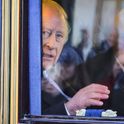In the end, last week’s "Black Monday” was nothing of the sort. The real one in 1987 saw equity markets dive by over 22 per cent, but by last Friday, most markets had steadied or ended up on the week. So is that the end of the story? It’s a question we need to find answers to, not least as an important US Federal Reserve policy meeting looms on 16-17th September, that could have implications for the Bank of England too.
The firestorm in global financial markets was attributed to developments in China, following a bungled mini-devaluation early in August and the subsequent failure to stabilise the equity market despite unusual attempts to prop it up. Some analysts and commentators predicted that deflation would be accentuated and that global recession would ensue. This rush to judgement looked and was decidedly non-expert. And yet, here are three important lessons to be learned.
First, China’s economic slowdown is no passing phase. It has been going on for four years and is becoming increasingly impervious to monetary and financial policy easing and other stimulus measures, such as infrastructure spending. The events of the last month have to be seen in this light, and it is quite possible that senior people, possibly even Premier Li Keqiang, could become "fall guys" for disappointing economic performance at the 19th Party Congress in 2017, if not sooner.
Second, there has been a marked change for the worse in the way China’s macro-economic management is perceived, and worse, a serious risk that officials favouring more market-oriented reform inside China have been discredited. Previously, state media have reported on veiled warnings to retired senior leaders, and other vested interests in the Party and the civil service who are evidently balking at the political campaigns being waged by President Xi Jinping. Last week, it was reported during the traditional summer Party officials’ retreat in the coastal resort in Beidahe that the scale of resistance to reform was on a scale "beyond what could have been imagined." It’s not clear what’s going on, but if the reform agenda is being diluted and or resisted—which I suspect is the case—China’s troubles are only just beginning.
Read more on China:
Is the Chinese ‘miracle’ over?
China isn’t the cause of this meltdown in markets?
Xi Jinping: A 21st-century Mao?
Third, even though the China slowdown has important consequences for commodity producers and Asian supply chains, the direct impact on the US and Europe is nowhere as big as has been made out. And yet, the volatility and uncertainty that has left a footprint on global finance has had a marked effect on interest rate expectations in the US, and also the UK. What was seen as a shoo-in rise in interest rates at the Fed’s September meeting is no longer seen as such. In fact, because a rise would now be seen as a surprise, most people now expect the Fed to desist.
New York Fed President Bill Dudley was quick out of the traps, saying that the case for a rate rise was "less compelling." Later in the week at the annual Jackson Hole conference, Fed Vice Chairman Stanley Fischer took a different line, saying the Fed shouldn’t wait until inflation reached the targeted 2 per cent before changing interest rate settings.
Fischer’s point is that the latest bout of disinflation, which has brought US inflation down to 1.2 percent (on the Fed’s preferred indicator, the personal consumption deflator), is temporary, and attributable to the slump in energy prices over the last several months. In the UK, where the CPI in July was 0.1 per cent up on last year’s measure, the same reasoning applies.
On the face of it, there is no reason to raise rates any time soon. But if energy prices stay steady, and the monthly trend in other inflation is no higher than it has been, then US inflation will exceed 2 per cent by early next year. In the UK, the CPI will get back up to 2-2.4 per cent. This is just base effects, as they say. If higher pay settlements and the effects of continued economic growth add just a smidgeon to inflation, the whole debate could be very different before next spring in Washington and on Threadneedle Street.
What’s going on in China is important domestically, and for suppliers and producers who have made out like bandits during the boom that ended in 2011. There is a risk, inevitably, that China itself could lapse into a recession by 2016-17, but for the time being, talk of a global recession is just excitable banter. The Fed and the Bank of England should look beyond it.












